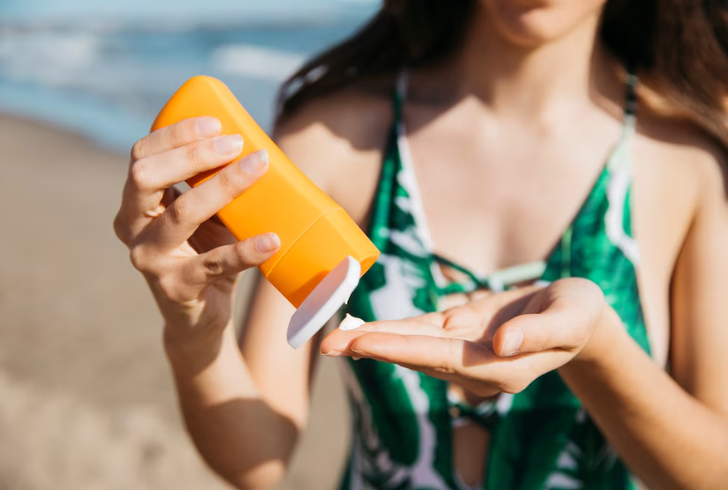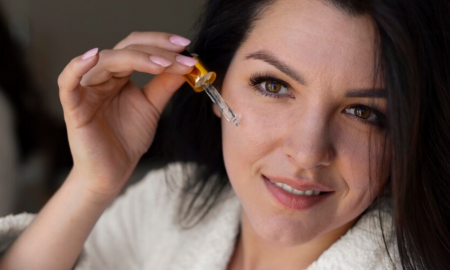
How to Pick Correct Sunscreen – Your Essential Guide

Choosing the right sunscreen can be challenging, especially when facing a range of options that vary in ingredients, SPF levels, and application methods. But understanding how to pick correct sunscreen is essential to ensure full protection for your skin.
This guide provides practical information about SPF ratings, sunscreen types, application tips, and the health benefits of proper sun protection.
Understanding SPF and Sun Protection
The Sun Protection Factor (SPF) is a critical feature when selecting sunscreen. SPF measures a product’s ability to protect skin from harmful UVB rays, which cause sunburn and contribute to skin cancer. For everyday protection, look for an SPF of at least 30, which filters about 97% of UVB rays, while SPF 50 offers approximately 98% protection. While no sunscreen blocks 100% of UVB rays, higher SPFs offer more effective barriers, particularly for prolonged sun exposure.

Freepik | Sun Protection Factor (SPF) protects skin from sunburn and skin cancer.
Types of Sunscreen
Various formulations of sunscreen cater to different skin types and preferences:
1. Creams – Ideal for normal to dry skin and the face.
2. Gels – Great for hairy areas, like the scalp.
3. Sprays – Convenient for quick applications on large areas but require careful application for even coverage.\
4. Oils – Popular for a smooth application, though often lacking broad-spectrum protection.
Each type has unique advantages, and it’s essential to select one that fits your daily activities and skin needs. If swimming, for instance, choose a water-resistant sunscreen and remember that it needs reapplication after getting out of the water.
Importance of Broad-Spectrum Sunscreens
Always choose a broad-spectrum sunscreen, which shields skin from both UVA and UVB rays. UVB rays primarily cause sunburn, while UVA rays penetrate deeper, contributing to skin aging and increased cancer risks. A broad-spectrum label assures protection against both types, making it an essential factor in how to pick the correct sunscreen.
Essential Tips for Effective Sun Protection
Applying sunscreen correctly is as important as selecting the right type. Ensure it’s applied at least 20–30 minutes before sun exposure, allowing time for the product to form a protective barrier. Use a generous amount to cover all exposed skin areas adequately. For adults, this generally means about a teaspoon (5 ml) for each arm, leg, and face. Full-body coverage might require about 35 ml.
Sun damage often occurs due to insufficient sunscreen application. Remember, reapplying every two hours or immediately after swimming or sweating is necessary to maintain effective coverage.
Other Sun Protection Tips

Freepik | diana.grytsku | Protect your eyes and face with wide-brimmed hats and UV-blocking sunglasses.
Beyond sunscreen, adopting additional sun safety measures can further safeguard skin:
1. Clothing – Wear long-sleeved, tightly woven fabrics for added protection.
2. Shade – Limit direct sun exposure, particularly between peak hours of 10 AM and 4 PM.
3. Sunglasses and Hats – Choose wide-brimmed hats and UV-blocking sunglasses for eye and face protection.
4. Avoid Tanning Beds – These emit harmful UVA/UVB rays and increase skin cancer risks.
Combining these precautions with effective sunscreen use enhances overall sun safety.
Sunscreen Standards and Regulations
Different countries have stringent standards for sunscreen products. In the United States, sunscreens undergo regulation to ensure they meet efficacy and safety standards. Products labeled SPF 30 or 50 undergo rigorous testing to confirm that they provide adequate UVB protection. Checking these labels can help you select sunscreens you trust to meet safety standards.
Health Benefits of Sunscreen
Utilizing sunscreen offers several health benefits, including:
1. Reduced Skin Cancer Risk – Regular use of sunscreen significantly lowers the risk of developing skin cancer, particularly melanoma.
2. Even Skin Tone – Sunscreen can help maintain an even skin tone, reducing the chances of discoloration caused by sun exposure.
3. Prevention of Premature Aging – Consistent sunscreen application prevents early signs of aging, such as fine lines and wrinkles, by protecting the skin from harmful UV rays.
Selecting the right sunscreen and applying it diligently is vital for safeguarding skin health. By knowing how to pick correct sunscreen, understanding SPF and application techniques, and combining sunscreen with additional sun safety measures, you can enjoy the outdoors while protecting your skin from harm.
More in Anti-Aging
-
`
Chad Smith and Will Ferrell Drum-Off – A Night of Comedy and Music
The year was 2014. The late-night talk show landscape was abuzz with a brewing battle unlike any other. It wasn’t a...
July 8, 2024 -
`
Can Coughing Cause Back Pain?
Back pain is a common complaint among many individuals, but did you know that a simple action like coughing can exacerbate...
July 5, 2024 -
`
How to Overcome Imposter Syndrome?
Imposter Syndrome is a familiar term many recognize as a psychological state where individuals doubt their accomplishments, fearing that others will...
June 27, 2024 -
`
Which Peptides Are Best for Anti-Aging?
For those seeking to combat the signs of aging and maintain a youthful appearance, the world of skincare can feel overwhelming....
June 18, 2024 -
`
Celebrities with Celiac Disease – Inspirational Stories and Struggles
Celiac disease is a serious condition, and even the rich and famous aren’t immune. Many celebrities have been open about their...
June 10, 2024 -
`
How to Fix Poor Sleep Hygiene for Better Rest
Sleep is a fundamental human need, as crucial for our well-being as a healthy diet and regular exercise. Yet, many people...
June 6, 2024 -
`
5 Easy & Effective Ways of Coping With Depression
Depression is more than just feeling sad or having a bad day. It is a pervasive mental health condition that affects...
May 30, 2024 -
`
Top 10 Practical 60th Birthday Ideas For Everyone
Turning 60 is a milestone worth celebrating! Whether you are planning your own bash or organizing a celebration for a loved...
May 24, 2024 -
`
What is the Meaning of Angelina Jolie’s Back Tattoo? Explore
If you have ever caught a glimpse of Angelina Jolie’s back tattoo, you might have wondered, “What is the story behind...
May 17, 2024















You must be logged in to post a comment Login